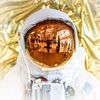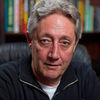RAW vs JEPG
Dec 21, 2013 05:29:43 #
wilikioti wrote:
So likening modifying a jpg to destroying your original negative, or slide, is quite accurate.
--Bob
--Bob
Sorry, I don't understand your reasoning. I shoot personal pictures in JPEG format. After perusing and selecting ones I want to work on, I open them in Photoshop. The first thing I do is make a duplicate copy and put in a different folder. I then make adjustments to the duplicate copies and store all the originals in a separate folder and put the folder into a separate back-up hard drive. At anytime, I can pull up the folders and select the pictures again. How is that like throwing the negatives away?[/quote]
Your camera threw the negatives away when it made jpg's.
Dec 21, 2013 05:38:55 #
Another argument for shooting RAW, is the improvement in RAW processing noise reduction, and even sharpening over the years. I have salvaged some earlier shots that were exposed poorly(mostly under), that I had given up on a few years ago. I had to go retrieve them from back up drives, but I could now make them pretty darn good. I wouldn't have had that available, I think, if I had shot them in jpg.
Dec 21, 2013 05:59:14 #
amehta
Loc: Boston
heyrob wrote:
I on the other hand, treat my RAW files as my digital negatives. I convert them to a basic .JPG, and then save my RAW files untouched. All adjustments are then done to the .jpg's and I always have my untouched RAW 'negative" if I ever need it.
It's possible I misunderstood your process. But, if not, I am curious why you do your adjustments to the jpg, instead of to the raw image? By converting to jpg first, you are applying data loss to the process before you start editing, and then again when you save the final jpg. If you work with your raw file, the only loss is when you are saving the final jpg.
If you edit a raw image, the software is not supposed to modify the raw data. You can confirm this for yourself:
1. Copy the raw file to another file.
2. Edit the new raw file.
3. Save your work.
4. Compare the file sizes of the original and second raw files.
If you're really worried, archive your raw files before you start making the adjustments.
Dec 21, 2013 06:05:23 #
amehta
Loc: Boston
heyrob wrote:
Your comment brings up another thought. People seem to wonder why we always need to sharpen our digital photos, the answer is simple really. With film, all the light is captured on a single layer of silver, on the digital sensor however, each color is on a different layer, and though not too far apart, it's enough to introduce a slight amount of blur to the image. Therefore the need for some sharpening to get a truly tack sharp image.
Color film uses layers to record different portions of the color spectrum.
Dec 21, 2013 14:41:53 #
rmalarz wrote:
Once you change a jpg, it's changed for good. Thus the reason for saving the copy. --Bob
But who does that. The object is to save the changed jpeg under a new name, and retain the original jpeg, so you can go back and do a substantially different change and save that new change as a new file.
In fact, I (and I know many others who) archive my originals before I do any other work on them. The originals as they came off the memory card are in a special folder, with subfolders, on my external drives. They are NOT mixed in with jpgs I have made changes.
The whole myth of RAWs being like negatives is frustrating. They are NOT negs, nothing like negs, and they retain their originally because the changes CANNOT be saved back to the RAW file. The programs that edit RAW can not write the changes back to the Original RAW format. RAW is simply non-destructible because of the limits put into the programs that edit them. You cannot save a RAW file as a RAW file.
JPG on the other hand is completely lost in it's original form by overwriting the files with the changes. If a person wanted to keep the originals, the process is VERY Simple. DO NOT overwrite the changes to the original file.
The safest way to prevent that is don't work with the originals, archive them, and work with copies to begin with.
You never have to lose your original shots... in fact it is near impossible to lose your original shots.
Likewise, while not impossible, it's difficult to lose your original Jpegs as long as you archive originals OR never overwrite your working jpgs with the changes you make, but give the new modified files different names like a sequence number.
Managing the Jpegs that are original or modified is not difficult. If you keep originals, and you keep the final modifieds, you will NOT use more storage space than you do by keeping RAW (big files) and edited Jpegs or TIFF files. TIFF are often bigger than RAW.
Summary...
1)RAW- changes and mods cannot be written back over the RAW. Changes and mods can only be saved in other formats, ie Jpeg, TIFF, etc. RAW has the safety factor of being indestructable by edits.
2)Jpeg- changes and mods can be written back over the original jpeg, losing the original. Common logic is to rename the file on the save, avoiding overwrite and loss of the original. Management can be done by sequential new names to avoid loss of the original.
3) TIFF- the essence of TIFF is that the same considerations for Jpeg apply, however TIFF is not a compression algorythm on the save. Jpeg cannot keep layers separate in most editing programs, while TIFF allows editing with the opportunity to return to the layers used in editing. TIFF's are often referred to as "Lossless" with no compression. (In reality, there are TIFF formats that WILL do compression, where you control the percentage of compression... Last time I looked there were well over 40 proprietary variations of TIFF, with many differences in scope and operation.)
RAW is of no value in terms of a file to send to others for review, as it takes a RAW editor to open it. Simplifying that statement, one would not send a RAW file to a service company for print. One would not generally send a RAW file to anyone for quick viewing, as it takes a RAW editor to view a RAW file. That's why the shooter edits a RAW file, and saves it to another usable or quick viewing format for general use.
The OP had the problem that most print services are NOT going to edit a RAW, just to make it printable/viewable. That is the responsibility of the original person to provide an image that can be simply worked with by the printers. THEY, DO NOT work with RAW for the most part.
Likewise you would not send Gramma a pic of the kids as a RAW file. Most likely Gramma does not have a raw editor and cannot show Grampa the Grandkid from a RAW file.
And finally, the first Jpeg that comes out of your camera is compressed, as are all Jpegs. It has already had some data discarded, so how can it possibly be referred to as a "negative" in the sense that a RAW is. It does not have as much data as the RAW, when you first start working on it.
That's about as inappropriate an analogy as the inappropriate analogy that RAW is like a Negative on film. Both analogies simply lead to confusion/frustration between trying to explain differences between film and digital.
RAW is simple the unadulterated capture of all the information that the sensor is capable of recording, into one file with more information, and prior to any compression of the data by the settings set up for Jpeg in the camera. Jpeg does NOT give you the totality of the recorded information in the capture that the sensor has the capacity to record in total. Jpeg is compressed. Compression is a function of discarding data from the file. RAW maintains all the data the sensor can record in a file.
What happens after, if you are shooting RAW Plus Jpeg is acquisition of two (2) files. One with all the data, one with less than all the data. The processing engine in the camera controls how much smaller the Jpeg (jpg) becomes.
Film is an analog variation of the digital process used in the digital camera.
In no way is it variable by differences in collection of the scene. Film uses a light sensitive chemical reaction based on emulsion, speed of light capture, etc. It is built into the file, one time. There are no variables of the camera other than shutter speed, or aperture, and possibly filters that can change the information collected by film. Added to that control is the ISO/ASA of film, which is fixed for each roll or sheet of film. All post capture manipulation of film is done in chemicals, and by variations of light, dodging, burning, etc. AFTER capture.
In addition, and again, in analog terms, the dynamic range is a function of each film type and emulsion. Where a digital camera has a dynamic range of the sensor, it is actually the film type, speed, and exposure characteristics of each roll or sheet of film that governs the Dynamic Range of film. A comparison would be if the memory cards you used controlled, speed, light gathering characteristics, etc. of the digital camera. That is not the case.
It is true Ansel Adams was a master in post capture manipulation of film, but it was analog with light control, filtering and little sticks with cardboard shapes attached to the end. In addition, he was a master at the differing chemical reactions, times of development or exposure to light.
Many postulate that Ansel would have had great fun with digital...???? Hmmm... perhaps not. The learning curve would not be totally lateral.
In addition, Ansel Adams was an extremely talented Concert Pianist. Many of his showings were set to his fingers manipulating the keys of a Concert Grand.
Have any here listened to his talent on the keyboard. I know ou've all seen "Sunrise over... whatever that town was". :thumbup: :hunf:
Dec 21, 2013 15:33:50 #
Kuzano wrote:
But who does that. The object is to save the changed jpeg under a new name, and retain the original jpeg, so you can go back and do a substantially different change and save that new change as a new file.
In fact, I (and I know many others who) archive my originals before I do any other work on them. The originals as they came off the memory card are in a special folder, with subfolders, on my external drives. They are NOT mixed in with jpgs I have made changes.
In fact, I (and I know many others who) archive my originals before I do any other work on them. The originals as they came off the memory card are in a special folder, with subfolders, on my external drives. They are NOT mixed in with jpgs I have made changes.
I'm just surprised that there are destructive editing programs still out there? Perhaps more importantly, who still uses a destructive editing program these days?
When I edit a JPEG or any other picture format like TIF, PNG, BMP, etc., the original automatically gets saved in a protected folder by my editing software. No user intervention is needed at all---no renaming or archiving.
If I want to revert back to the original, I don't even need to restore the saved file in the protected folder---I just click one button to restore original.
Folks that are worried about destroying their originals by editing just need to find a good editing program. This is really easy to do because most are non-destructive now anyway. Seriously, what is the concern here? Just curious.
Dec 21, 2013 15:48:35 #
mdorn wrote:
I'm just surprised that there are destructive edit... (show quote)
Very good point, and very correct. Unfortunately, it falls back to a lack of generally acceptable standards in industry practices in coding software.
The only way we'll see a demise of programs that destruct original files is when the confusion dies and only Non Destructible programs are purchased by informed shoppers who understand the failings of the market.
I think you might agree that the use of free, and often poorly written software prolongs the use of "bad" software with reference to the issue. But then it appears that some of the most free and casual usage software won't overwrite original files when editing them.
Then, add to that, that until people make the demand, some fairly sophisticated and pricey software is still NOT addressing your comments.
I have not looked in some time, but I believe you can still easily overwrite and destroy any image file in Photoshop Elements. If that is the case and considering the income stream for Adobe, Adobe should be leading the charge on conquering the issue of lost files by overwrite of originals.
????? :?
Dec 21, 2013 15:54:43 #
Hi John. Shooting real estate pictures, I have to use a 10mm lens on my (cropped) 7D to get wide enough, so I have some distortion on most shots. The new Photoshop CC has an auto upright (straightening) function that works great. I have a custom setting set up in RAW that automatically hits "lens profile", "auto upright", and "clarity & vibrance +10". Then all I do is hit "auto" on the Basic exposure/contrast/etc. Tab, hit "auto" on white balance and compare it to "as shot", and maybe slide the "exposure" a little. Then I open image into Photoshop where I dodge and burn, shamelessly oversaturate, reduce noise, sharpen, reduce size, and save for the web. Everything after "saturate" is automated, so I just sit there and watch it work.
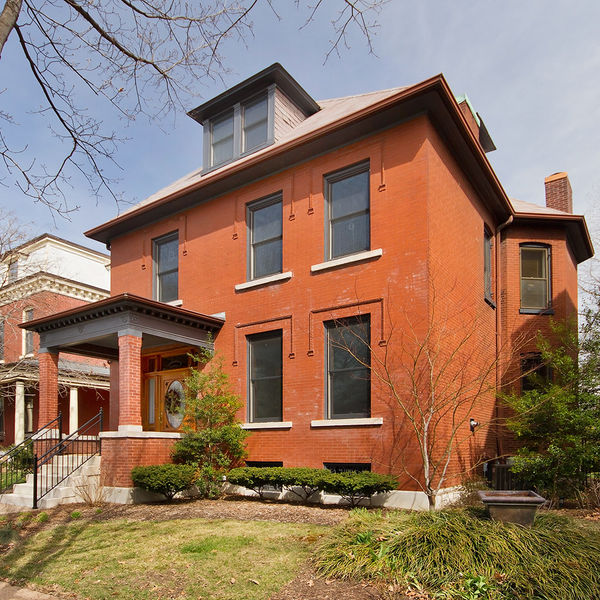
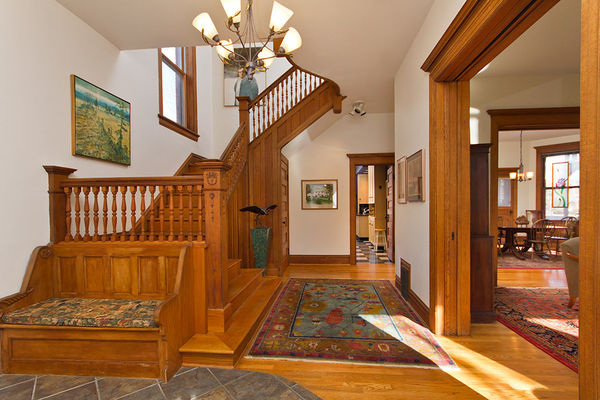
Dec 22, 2013 14:34:58 #
JoeM wrote:
I still a newbie, but I'd like to know what advantage there is in shooting RAW as oppose to JEPG. RAW is to get better photos with more detail in the photo, as I understand it. Since I do not print large photos at home I send them out to places like Vista Print, Costco and such. But these companies only deal in JEPG's. I'm sure this must have been discussed before and I've must have missed it, but why shoot RAW if not for commercial use?
What am I missing?
What am I missing?
If you edit your photos, shoot in RAW for maximum latitude and flexibility. If you just shoot and send out for prints, forget it and shoot in Fine JPEG because you will rarely find any company who prints anything but JPEG. It's JPEG, by the way, not JEPG.
Dec 22, 2013 14:36:22 #
RolandComfort wrote:
Hi John. Shooting real estate pictures, I have to ... (show quote)
I assume the second shot is HDR... or do you use Fusion?
Dec 22, 2013 15:39:01 #
No, I use 5 speedlights. There's one upstairs, one in the kitchen, one in the dining room, one in the living room and I'm holding one aimed at the ceiling, just out of sight. All of the strobes are aimed at the ceiling. It takes me about 2 hours to shoot a big house, ending up with about 130 exposures bracketing and changing flash settings. It only takes about 10 minutes to scroll through them in Bridge to select 35 - 40 keepers which I then process in Photoshop CC as described above. I never thought about using HDR but there is a huge dynamic range difference when you have a big window in a shot on a sunny day. Plus, the speedlight color temperature really brightens interior shots and brings out colors in a way that you could not get shooting natural, wide open, and at high ISO.
Dec 23, 2013 13:28:15 #
RolandComfort wrote:
No, I use 5 speedlights. There's one upstairs, one... (show quote)
I shoot large houses in Fusion but small houses with a single on-camera flash, Fong-type diffuser, aperture priority, f/7.1, and ISO 800. For small houses I'm supposed to be out in one hour or less. For the big ones I stay much longer and do HDR/Fusion whether my national employer likes it or not. The local realtors appreciate me spending the time and effort and that's what counts to keep them requesting me.
I've found that using Photomatix fusion then doing my tone mapping in Lightroom helps dramatically with halo effect around windows with strong light. I've experimented for a long time and finally have a preset I can apply to all my images simultaneously which saves a lot of editing time, then I individually touch up what the preset did in bulk. The longest procedure is converting 7 RAWs per composed shot into 7 TIFFs, then wait an hour and a half for them to be bulk processed by Photomatix. But I can go do something else while it works.
I'm better at getting the outdoors to look natural when using flash but one flash won't fill a large home living area and I don't want to carry five speedlights, stands, etc. for what I get paid. When I go independent that may be a different story. For now I equalize room light and fill shadows with Viveza.
HDR is highly in demand here and I'm one of few using it (well, technically it's not HDR but fusion) in my area so I continue to work on refining my technique.
Keep up the good work. If you want to talk further just PM me!
Fusion used. Glass was a little dirty outside
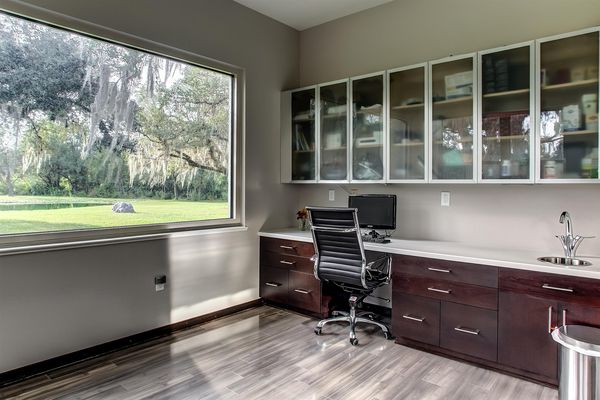
Flash. The window light was limited by an outdoor wall

Jan 5, 2014 12:08:53 #
Hi it is a little cool around here to go out shooting in the raw and I know I wouldn't take time to make any adjustments unless it was the direction I was heading. They frown on things like that here.
I'm sorry just couldn't pass it up.
I'm sorry just couldn't pass it up.
If you want to reply, then register here. Registration is free and your account is created instantly, so you can post right away.

